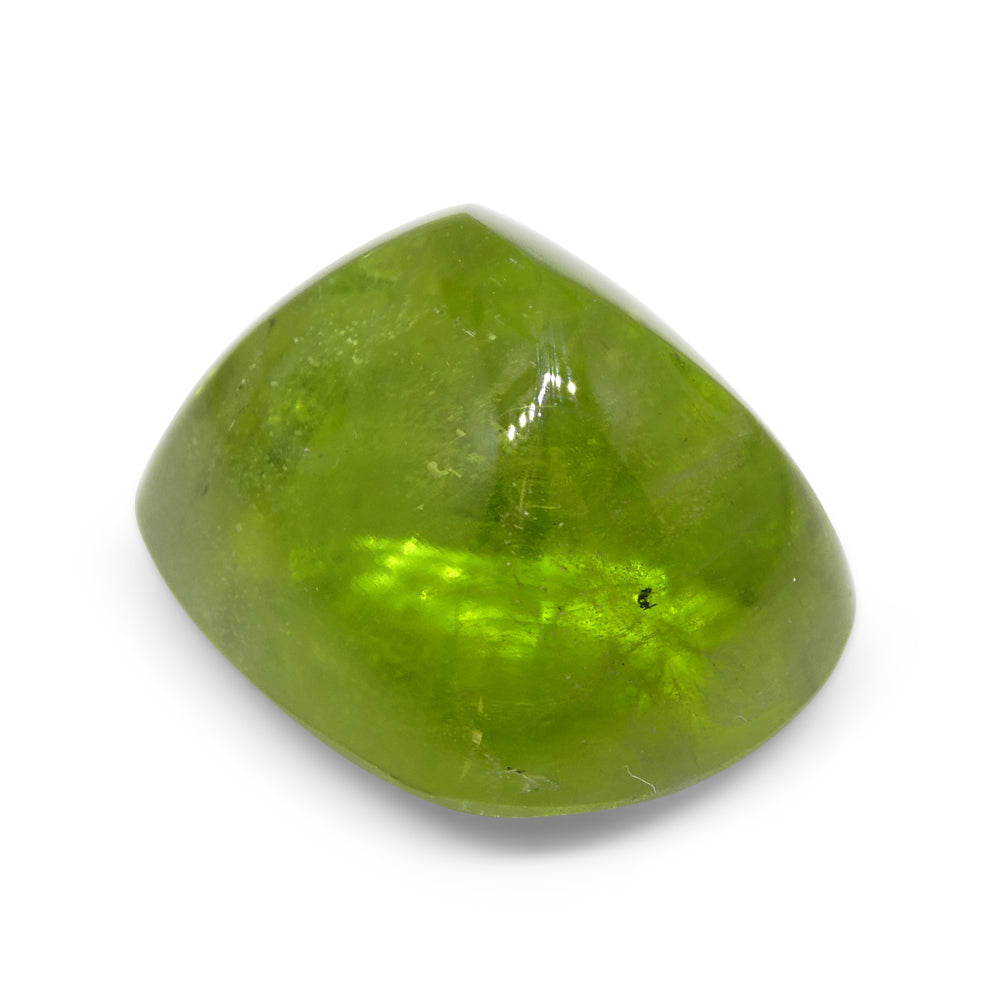
The Perfection of Peridot, part 2: A Nuanced Name
Share
The history of peridot’s nomenclature is even more complex than its current labelling. In the 18th Century, the mineral now known as “topaz” was officially given its name by Western scientists. This name is thought to be derived from the term “topazos” once used by Pliny the Elder to describe green-golden stones found on an island in the Red Sea which are now understood to have been peridot, and it is likely that this name was then chosen for topaz because of the golden colour it sometimes displays and the golden element of peridot’s colour referenced by Pliny. The name “topazos” was among the earliest references to peridot in historical texts, and the gemstone would need a new name moving forward into the modern era.

French art historian and naturalist Antoine Joseph Dezallier d'Argenville referred to common olivines as "peridot ordinaire" in 1755; believed to have originated as early at the 13th Century C.E., the French word “peridot” is thought to have been derived from the Arabic word “faridat” meaning “gem” although this is not entirely certain. Eventually, the German geologist Abraham Gottlob Werner gave olivine its current name in the year 1790 as a reference to its olive colour, when he also attempted to give the gem grade olivines that were used in jewellery the separate name of “chrysolite” which had previously been used for olivine by Swedish chemist and mineralogist Johan Gottschalk Wallerius in 1747; at the time, Werner believed that typical olivine and gem quality peridot were two entirely distinct minerals. It is thought that the word “chrysolite” was originally derived from the ancient Greek “chrysolithos”, meaning “golden stone”, a term that was used in the ancient world to refer to multiple different golden toned gemstones including topaz, chrysoberyl, and possibly even citrine; in light of both the ancient meaning of “chrysolite” as a possible name for topaz and the ancient use of “topazos” as a name for peridot, it is easy to see how the name “chrysolite” was applied to olivine gems by Werner. The name “chrysolite” is sometimes still used today to refer to peridot, however it is no longer used in any official academic context. Interestingly, the prefix “chryso” meaning “golden” has in recent times become associated with stones that typically display green or yellow-green hues, such as chrysoprase and chrysopal, rather than with stones of a yellow or gold colour; this likely stems from both the use of the name “chrysolite” by French chemist Balthasar Georges Sage in 1777 to refer to the mineral prehnite, and its use by Werner and Wallerius during the same era as a name for olivine. After some time, German chemist Martin Heinrich Klaproth was able to prove that olivine and chrysolite were not completely distinct species and were in fact closely related. From that point forward, “olivine” was the name used in English speaking nations for what was at the time understood to be a single mineral species.


In 1823, German chemist Johann Friedrich August Breithaupt identified the mineral tephroite (Mn2SiO4) as being related to olivine, and in 1824 Serve-Dieu Abailard "Armand" Lévy, a French mathematician and chemist, named magnesium rich olivine “forsterite” in honour of Prussian mineralogist Adolarius Jacob Forster. In 1840, German chemist Christian Gottlieb Gmelin gave the name “fayalite” to iron rich olivine as a reference to its type locality on Fayal Island in the Azores District of Portugal. Using the classification of crystal systems, American mineralogists James Dwight Dana and George Jarvis Brush organised the olivine minerals into an official mineral group in 1868 which they called the “chrysolite group”, but this was changed to “olivine group” in the 20th Century; the International Mineralogical Association now recognizes the olivine group as containing multiple related minerals, but the term “olivine” is most often used to refer to the olivine solid solution series composed of endmembers forsterite and fayalite. In places where French was the dominant language, the term “peridot” came into use as a name for olivine. Over time, “peridot” became the international name which specifically referenced the variety of olivine most suitable for use as a gemstone, possibly as a result of how many peridot gems were thought to have been cut in France during the early 20th century.

Peridot is of course best appreciated as a component of fine jewellery. In the next part of this series, learn about some of peridot’s gemological properties and how it may be used in custom gemstone jewellery designs.
© Yaĝé Enigmus




